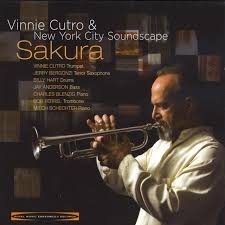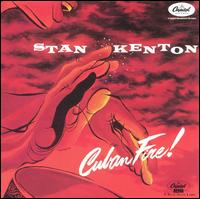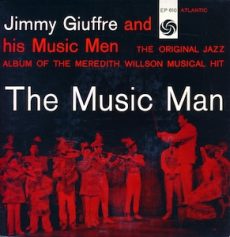
Daily Dose Of Jazz…
Vinnie Cutro was born in New Jersey on September 9, 1953 and received his formal musical training throughout his formative years. He continued his education at New Jersey University, receiving his B.A in Music Education, then got his Masters in Jazz Performance from New York University. He furthered his studies in jazz composition, classical studies, jazz arranging and counterpoint with Dr. Tom Boras and Jim McNeely.
His working education began as a freelance musician in the New York City area. During the past 30 years Vinnie has performed with Horace Silver, Buddy Rich and Lionel Hampton. During his tenure with the latter he performed guest appearances with various American symphonic orchestras.
He has traveled extensively throughout the world appearing at jazz festivals and concerts in Europe, Japan, Africa, Canada, South America and the U.S.A. Cutro’s debut release as a leader, Blues for the Optimist, came in 1995 and featured Bob Mintzer, Jim McNeely, Victor Jones, and Mike Richmond. His sophomore release, Aberration, features guitarist Mike Stern, trombonist Bob Farrel, bassist Martin Wind, Sarah Jane Cion on piano, Victor Jones on drums and pianist Mitch Schechter.
Trumpeter Vinnie Cutro continues to compose, record and perform in the New York City area with his new ensemble New York City Soundscape.
More Posts: bandleader,history,instrumental,jazz,music,trumpet

Requisites
The Final Tour: Copenhagen, March 24, 1960 ~ Miles Davis and John Coltrane | By Eddie Carter
In this morning’s discussion, I’m presenting an album by Miles Davis and John Coltrane from the library for your consideration. The Miles Davis Quintet performed at the distinguished Denmark venue, Tivolis Koncertsal, for the first time as part of The Spring 1960 Jazz at The Philharmonic European Tour. However, changes were on the way, as the album’s title suggests, The Final Tour: Copenhagen, March 24, 1960 (Columbia Legacy 88985498741). It would mark the end of an era as tenor saxophonist John Coltrane was looking to leave and start his group. The rhythm section, Wynton Kelly on piano, Paul Chambers on bass, and Jimmy Cobb on drums, would also leave to become The Wynton Kelly Trio.
Despite the underlying questions facing the trumpeter, the quintet’s three performances for the capacity audience that evening were brilliant and a highlight of the tour. To kick things off, Norman Granz, the master of ceremonies, introduced each man individually, with the crowd’s largest ovations reserved for Paul, John, and Miles. My copy is the 2018 European Mono Limited Edition reissue. With a few snaps of the leader’s fingers, the trio kicks off So What by Miles Davis with a short introduction segueing into Miles’ and John’s infectious melody, a captivating tune that immediately draws you in. Davis ignites the first solo with intense heat. John comes in next to dispense a bit of rhythmic fury, and then Wynton infuses the finale with jubilant enthusiasm ahead of the closing chorus and climax.
The pace slows to mid-tempo as the ensemble begins On Green Dolphin Street by Bronislaw Kaper and Ned Washington from the 1947 film Green Dolphin Street. The first part of this standard opens with the theme unfolding at a leisurely pace and Miles, on the muted horn, leading the way into a delightful opening statement. John soars cheerfully into a captivating, well-behaved performance. Part Two of On Green Dolphin Street starts on the second side, with Wynton cruising at a comfortable speed behind both horns in the following interpretation, as smooth as silk. Paul takes his first opportunity to solo with a brisk footnote on the closing statement that swings masterfully into the theme’s return and finale.
All Blues by Miles Davis affords the leader, John, and Wynton ample solo space. Paul gets things off to a good start with a concise introduction, leading to Miles’s carefree theme back on the muted horn. He removes it to begin the opening statement. John follows him with a relaxing interpretation that is as enjoyable as a day at the beach. Wynton sustains the easygoing pace with a gorgeous performance into the ending theme and soft summation. The closer is an incomplete take of Miles’ The Theme, a deliberate choice that signals the end of the set and album, lasting only thirty seconds until it fades to nothingness. The mastering of The Final Tour: Copenhagen, March 24, 1960, by Mark Wilder is a demonstration class and a great way to show off a mid-level or high-end audio system.
The vinyl is exceptionally quiet until the music starts, and the instruments have outstanding detail. This reveals an incredible soundstage with superbly presented music, thanks to jazz producer George Wein, Danish Radio and the Danish Programming Company, who originally recorded the shows for broadcast. This is my first LP from the We Are Vinyl series from Columbia-Legacy, and judging by its superb sound quality, it won’t be the last. If you’re a fan of either of these giants and are looking for a live jazz album where each musician is at the peak of their creativity. In that case, I enthusiastically invite you to check out The Final Tour: Copenhagen, March 24, 1960, by Miles Davis and John Coltrane. It’s an LP that merits serious consideration for any jazz fan’s library, and I am sure you’ll enjoy it!
~ On Green Dolphin Street – Source: JazzStandards.com
© 2024 by Edward Thomas Carter
More Posts: choice,classic,collectible,collector,history,instrumental,jazz,music,saxophone,trumpet

Daily Dose Of Jazz…
Art Anton was born on September 8, 1926 in New York City. In the early 40’s he was a private student of Irving Torgman, and was a music major at New York University from 1943 through 1944. He returned for further studies from 1946 through 1947. In between, the Navy grabbed him to play its own military paradiddles. From the late ’40s onward, he began working with leaders such as Herbie Fields, Sonny Dunham, Bobby Byrne, Tommy Reynolds, and Art Wall.
In 1952, he got into the combo of saxophonist Bud Freeman, moving to pianist Ralph Flanagan’s band the following year. Anton’s drumming style stuck closely to straight-ahead jazz swinging or whatever other beat was required. After gigs in 1954 with Jerry Gray and Charlie Barnet, he relocated to the west coast and began freelancing. He performed and recorded with the big band of Stan Kenton to multi-instrumentalist Jimmy Giuffre’s smaller units.
Maintaining steady employment as a jazzman on the stingy Los Angeles, California scene was difficult, and Artie looked for other types of employment. During the ’60s, he turned to selling vacuum cleaners, worked as a private detective, while remaining a highly respected West Coast percussionist.
Drummer and percussionist Art Anton, who is also listed as Artie or Arthur, died on July 27, 2003 in Yakima, Washington.
More Posts: drums,history,instrumental,jazz,music,percussion

Daily Dose Of Jazz…
Graeme Emerson Bell was born on September 7, 1914 in Richmond, Victoria, Australia. His father performed musical comedy and music hall on the early Australian Broadcasting Commission radio, and his mother was a contralto recitalist in Dame Nellie Melba’s company.
From the age of 12, Bell had weekly piano lessons in classical music by Jesse Stewart Young, a contemporary of his mother. He attended Scotch College in 1929 and 1930, leaving school at sixteen during the Great Depression and worked for T & G Insurance as a clerk for over nine years, and had a stint as a farm hand. He paid for his own piano lessons for two further years, and in later years he supplemented his income by teaching.
Graeme was converted to jazz by Roger, a drummer, who later became a singer and trumpete. Roger would play 78s on the family’s record player, including Fats Waller’s Handful of Keys. It was in 1935 that he started playing jazz with Roger at Melbourne dances and clubs. By 1941 he fronted his own Graeme Bell Jazz Gang. Unfit for active duty during World War II, he entertained Australian troops, including travelling to Mackay, Queensland in early 1943. After his return to Melbourne, Bell became a full-time professional with the Dixieland Jazz Band.
His first recordings were for William Miller’s Ampersand label in 1943, after which he became leader of the house band for the Eureka Youth League and established a cabaret, the Uptown Club, in 1946. After playing at the inaugural Australian Jazz Convention, Bell’s band was renamed Australian Jazz Band and became the first such band to tour Europe.
The Australian Jazz Band travelled to the United Kingdom in early 1948 and Graeme started the Leicester Square Jazz Club, playing music specifically for dancing, which continued into the 1950s. Many future and contemporary bands were to be influenced by his music. During the early 1950s he periodically returned to UK and Europe to perform, and in 1951 they appeared at Oxford Town Hall with the performance ultimately released as Big Bill Broonzy in Concert with Graeme Bell & his Australian Jazz Band.
Upon returning to Australia he settled in Sydney and became one of the leading promoters of jazz in the country, bringing American performers such as trumpeter Rex Stewart. He played commercial music and taught piano to supplement his income.
Pianist Graeme Bell, wrote Graeme Bell, Australian Jazzman, was inducted into the Australian Recording Industry Association Hall of Fame in 1997 and made over 1,500 recordings, died on June 13, 2012 after suffering from a stroke at 97.
More Posts: bandleader,history,instrumental,jazz,music,piano

Daily Dose Of Jazz…
Sol Schlinger was born on September 6, 1926 in the Bronx, New York. His father was an unsuccessful entrepreneur who booked concerts in Europe, his mother a successful cook who earned the family money. He grew up with Stan Getz, Bernie Glow and Lenny Hambro. His first instrument was the tenor saxophone and took lessons from the saxophonist in the band at a small resort in the Catskill Mountains north of New York City. His dedication did not go unnoticed and his father got him a C-melody saxophone and began lessons with Bill Sheiner on a tenor that he sold him for $75.
He began his professional career at the age of sixteen with Henry Jerome & His Stepping Stones at the Pelham Heath Inn. World War II saw Sol touring wit.h Shep Fields, including a trip to Europe to play for the troops. After the war ended he took up the baritone saxophone and went out on the road with Charlie Barnett’s band. He then joined Buddy Rich’s outfit.
The late Forties saw Schlinger with Tommy Dorsey, recording with Sauter-Finegan, and became a member of the East Coast sax section with Hal McKusick, Gene Quill, Zoot Sims, Al Cohn and sometimes Phil Woods. He often recorded with trombonist-arranger Billy Byers, who was also a ghostwriter for Quincy Jones. Following this he joined Benny Goodman for a period. He would go on to work with Tony Bennett, Carmen McRae and others.
Baritone saxophonist Sol Schlinger, who was a first call and solid anchor in the reed section, died at 91 years old on November 1, 2017.
More Posts: history,instrumental,jazz,music,saxophone



